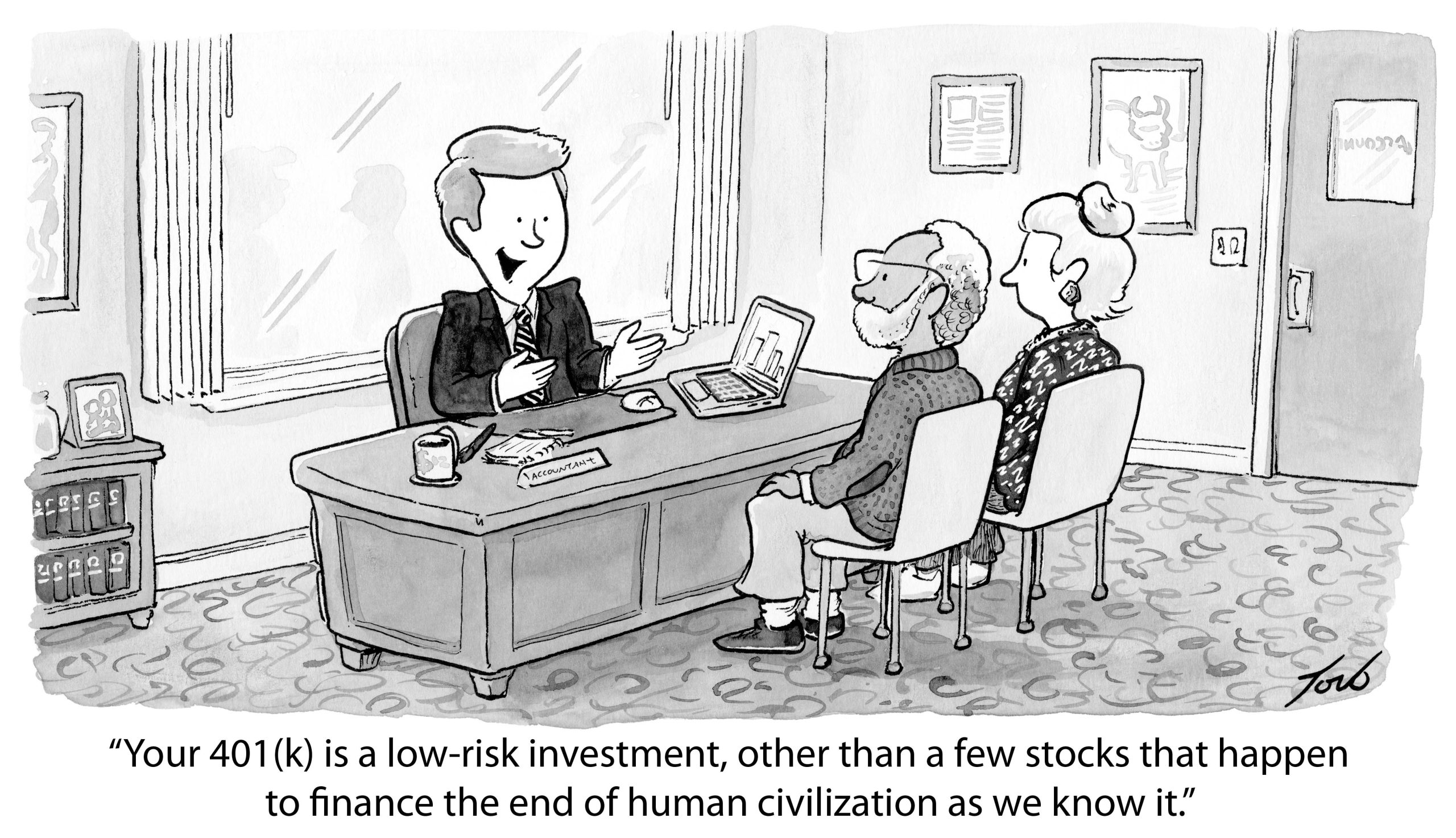

If you’re worried that your retirement plan might include investments in fossil fuels, here’s what you can do.
The first thing you’ll want to do is research what’s in your 401(k). Which stocks and bonds are in the mutual funds in your plan now, and which other funds are available through your employer’s plan?
Try FossilFreeFunds.org’s tool called Invest Your Values, which allows you to plug in the name of a fund and see what percentage of its investments are in fossil fuels, deforestation contributors, gun manufacturers, and the like. If you click on the grade the tool generates, say the “D” for fossil fuels, you get the details of both the percentage invested in fossil fuels and which specific companies are invested in by that fund.
Read: Your 401(k) might be feeding the climate crisis
The Invest Your Values tool also lets you look up how much the average employee at any given company is invested in fossil fuels. Sphere offers a tool, Atmosphere, that lets you look up more than 100 companies and see what the average 401(k) participant at that company is investing in fossil fuels.
You can share your findings with like-minded co-workers who are also worried about the climate crisis. Perhaps you can get together to jointly ask your employer to add sustainable or climate-friendly funds to their 401(k) offering or even change the offerings altogether.
“Employers want to keep their employees happy and 401(k) advisers want to keep companies — which are their customers — happy,” said Alex Wright-Gladstein, initiator of a recent #RetireBigOil march.
Employers typically rely on 401(k) advisers to recommend and set up a 401(k) plan for employees. But the employer/company is the customer, and as such, has the power to ask for something different. Wright-Gladstein says that if the employer hears from enough people, they will be motivated to ask their 401(k) adviser firm to expand the types of mutual funds available and change the default funds.
FossilFreeFunds.org/funds offers a list of dozens of climate-friendly mutual funds, including funds from Calvert, Parnassus, Impax Asset Management, Trillium, Green Century, ClearBridge, and others known to invest with conscious or climate-smart investment expertise. FossilFreeFunds.org/funds rates them both by financial performance and sustainability metrics. Morningstar, the investment research company, offers a sustainable investing webpage. Morningstar’s head of sustainable research offers a list of index funds that do not include companies with fossil fuel reserves (indicating plans to burn them in the future), though the funds might include some oil and gas companies. Morningstar also does a sustainability rating of major funds.
Besides helping the planet, switching 401(k) offerings could also be a great financial move. Many experts believe that “peak oil” — the point in time when oil demand peaks and begins to decline — is arriving or maybe already here. The transition should benefit more people than just savvy investors, private equity, and the like who are already placing their green bets with $1.8 trillion in investment in new clean energy projects like solar and wind in 2023 that dwarfed the $1 billion invested in new oil, gas, and coal projects, according to Bloomberg New Energy Finance. You and your co-workers should be able to profit from the green energy transition too.
And you should be able to expect your retirement savings will be there when you retire, and not have shrunk because a crash in fossil fuel energy stocks caught the broad market and indexes — and thus your retirement plan — unprepared.
Tom Toro is a cartoonist and writer who has published over 200 cartoons in The New Yorker since 2010.
We help millions of people understand climate change and what to do about it. Help us reach even more people like you.
Source link


